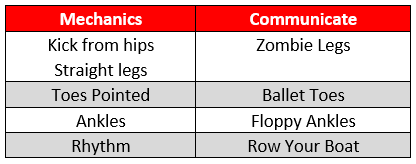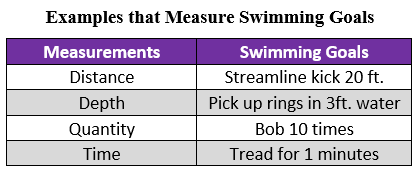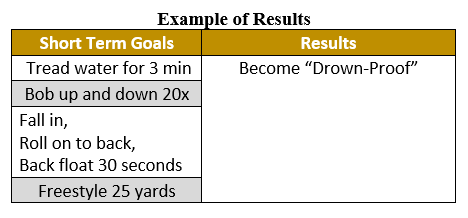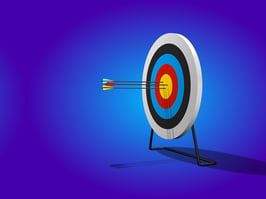
“You can't put a limit on anything.
The more you dream, the farther you get.”
-Michael Phelps
Unfortunately, many little swimmers often come to the pool with a limited view of their own abilities. Before we can really begin to ‘push’ little swimmers we have to remove those limitations from their minds and instill a belief in their own abilities. Because without this belief, little swimmers are not likely to succeed.
Goal setting is an important tool in eliminating limitations and motivating little swimmers to do their best. Often attributed to business and athletics, goal setting isn’t just for grown-ups anymore.
Studies have shown that goal setting can help kiddos to:
- Increase motivation to achieve
- Develop pride and satisfaction
- Raise self-confidence
- Improve performance
While in college, I learned the SMART Method of Goals Setting [1] and I have used it throughout my business career to successfully motivate employees to reach their full potentials. Recently, I have found that the SMART Method is very useful in motivating kiddos to swim. SMART is an acronym that describes the important fundamentals of goal setting.

[1] Management by Objectives, Peter Drucker
SPECIFIC
Target a Specific Swimming Skill
Begin by breaking down the mechanics of the swimming skills and communicating to little swimmers exactly what you want them to do. The more specific your description, the greater the chance the little swimmers will succeed.
Examples specifying swimming skills - “flutter kick”

MEASURABLE
Measure Progress

Decide how you are going to measure your little swimmer's progress? By quantifying a swimming skill, you know where your kiddos are at and what improvement is needed to fulfill the goal. The measurements that best quantify swimming goals are distance, depth, quantities and time.

ACHIEVABLE
Set Goals That are Challenging and Achievable
 Nothing is wrong with shooting for the stars. However, if a goal is viewed as impossible to reach, it has a negative motivational effect on a little swimmer. There is nothing more deflating than failing to meet a goal. On the other hand, achieving a goal, no matter how small, develops pride and self-confidence in a little swimmer.
Nothing is wrong with shooting for the stars. However, if a goal is viewed as impossible to reach, it has a negative motivational effect on a little swimmer. There is nothing more deflating than failing to meet a goal. On the other hand, achieving a goal, no matter how small, develops pride and self-confidence in a little swimmer.
Start with goals that little swimmers know they can meet. Once the goal is met, incrementally increase the goal. I like the Salami Metaphor- one slice at a time.
For example: to swim 20 feet might seem unrealistic to a little swimmer. However, a goal to swim 10 feet is both realistic and achievable. As soon as the little swim reaches 10 feet, increase to 12-foot goal, then a 14-foot goal, and so on.
RESULTS
Set Goals with Results in Mind
Think in terms of cause and effect. Each specific goal should add up to a specific result.

Aim for improvement, not perfection
Remember improvement takes time. Little swimmers might not be able to accomplish all the skills perfectly. Aiming for progress, rather than for perfection, will allow little swimmers to maintain positive attitudes, celebrate successes, and continue moving towards their goals.
TIME
 Specify When the Goal Will Be Achieved
Specify When the Goal Will Be Achieved
A goal should be grounded within a time-frame. Without a time-frame tied to a goal there is no sense of urgency. However, take into account, some little swimmers catch on fast and other slowly depending on age, muscle type, aptitude etc.
So, keep the time-frame realistic and flexible, that way you can keep self-confidence high. Being too strict on the time aspect of your goal setting can have a negative effect on a little swimmer.
For example: Swim 25 yards by our next vacation.
Goal setting is a great way to “push” little swimmers to reach their full potential. Goal setting also increases motivation, develops pride, raises self-confidence, and improves performance. Use the SMART Method and focus on making goals that are specific, measurable, achievable, result oriented, and time sensitive. Good luck!
Are you on the SMART track to swimming success? Interested in learning more about SafeSplash Swim School swim lessons? Register today to learn more!




